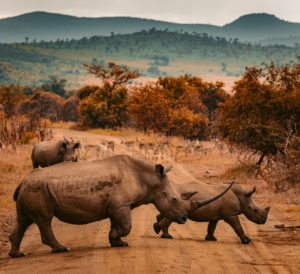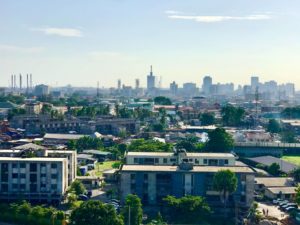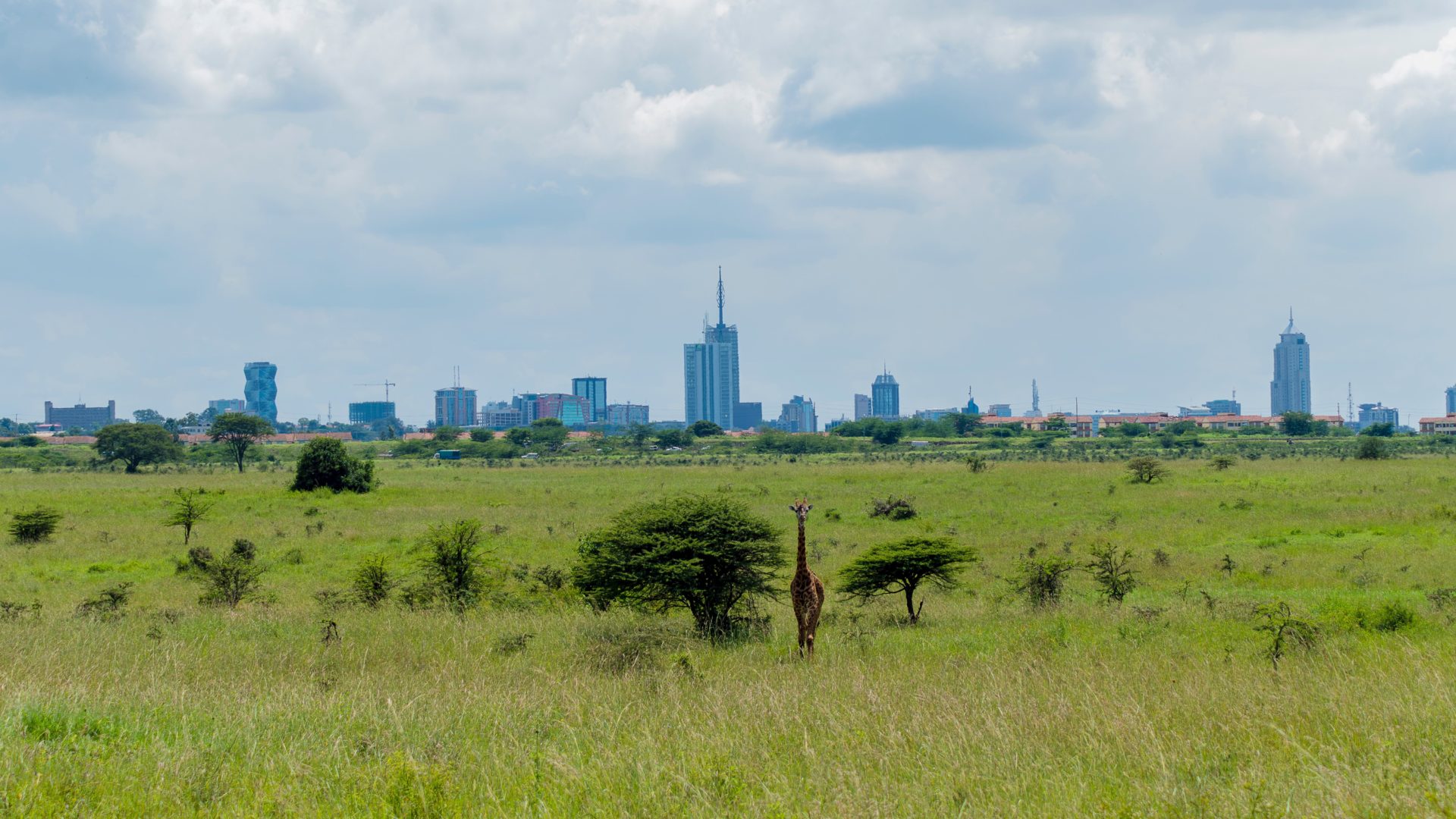A new study shows that the combination of human population growth and climate change will likely lead to significant habitat loss in Africa’s protected areas, underlining the importance of ramping up efforts to cut emissions and improve accessibility of family planning.
The neglected crisis
The biodiversity loss crisis receives very little attention compared to the climate crisis, yet it is just as alarming. Species are going extinct 1,000 times faster than they would be without human activity, compromising the resilience of ecosystems and their ability to support human life. Extinction is irreversible — once a species disappears, it is gone forever, which also has disturbing ethical and sociocultural implications.
Many people believe climate change is to blame for the extinction crisis — while it does present a major and growing threat to species around the world, it is far outweighed in destructive impact by the two primary, overlooked, drivers of biodiversity loss: habitat destruction and overexploitation of nature, which are fueled by human population and economic growth.
Squeezing out the wild things
 Africa’s wildlife is iconic, and its protected areas present some of the last strongholds of intact, species-rich assemblages, but conservationists are rightly concerned about their future.
Africa’s wildlife is iconic, and its protected areas present some of the last strongholds of intact, species-rich assemblages, but conservationists are rightly concerned about their future.
A 2019 study published in Nature Scientific Reports, which represented the first Africa-wide assessment of a whole range of socioeconomic drivers of environmental degradation, found that increasing human population pressure was the most important predictor of nature loss, with the most densely populated areas suffering the worst damage.
The authors warned:
“[…] there has therefore never before been a more important time to re-invigorate the need for long-term, culturally sensitive, and meaningful family-planning measures if many African nations are to have any hope of stemming the decline of their biodiversity.”
Modeling impacts of population growth and climate change
A similar study published in Conservation Biology last month looked at the combined impacts of climate change and population growth on protected areas across Africa. The authors modeled climate-driven tree cover change, human population density, and land use change during the 21st century under two different, widely used development scenarios.
In the “middle-of-the-road” scenario, also called SSP2, current development trends continue and some climate change mitigation measures are adopted, with the global population peaking between 2070 and 2080 at around 9.5 billion. In Africa, the population would grow by 157% by the end of the century relative to 2010 under this scenario. The “fossil-fueled development” scenario, also called SSP5, is marked by increased exploitation of fossil fuel resources but also greater investment in health and education, resulting in the global population peaking at 8.5 billion between 2050 and 2060 and declining to 7 billion by 2100. Under this scenario, Africa’s population would be 77% higher in 2100 than in 2010.
It should be noted that both of the modeled scenarios are a lot more optimistic population-wise than the UN’s medium (most likely) projection of 9.7 billion people globally by 2050 and 10.4 billion people in 2100. According to the UN, the population of Africa alone is projected to grow from 1.4 billion today to 3.9 billion by the end of the century. Relative to 2010 population levels (just over 1 billion), this represents a 290% increase (essentially a tripling).
 Mean temperature increase by 2100 in Africa is 2°C under SSP2 and 4.5°C under SSP5, while the larger per person demand under SSP5 results in similar land use change as the higher population growth scenario of SSP2, with cropland expected to increase by 42% (SSP5) and 51% (SSP2) and pastures to decrease by 7% (both SSP5 and SSP2).
Mean temperature increase by 2100 in Africa is 2°C under SSP2 and 4.5°C under SSP5, while the larger per person demand under SSP5 results in similar land use change as the higher population growth scenario of SSP2, with cropland expected to increase by 42% (SSP5) and 51% (SSP2) and pastures to decrease by 7% (both SSP5 and SSP2).
The study found that tree cover in protected areas is expected to increase under both scenarios. This is a result of changes in CO2 concentration, which affects plant growth. While more trees can be beneficial in many contexts and areas, conversion of savanna and natural grasslands to tree cover can be harmful to native biodiversity. Overall, all protected areas were projected to be negatively impacted by climate change and population pressure. These pressures are expected to be strongest in Western Africa, where protected areas may face the worst habitat loss. Nigeria’s population is growing so fast that it is expected to become the world’s third most populous country by 2050, after India and China.
Changing course to a better future
The authors call for prioritizing climate change mitigation as well as promoting sustainable development to reduce population and land use pressures. They also point out that increasing population could create pressure to downgrade protected areas to allow human settlement, construction and farming, which would be incompatible with the urgent need to increase protected areas globally and halt biodiversity loss.
In light of the models utilizing population projections that are far lower than the UN’s, future habitat loss could be worse than the study’s scenarios demonstrate. Unfortunately, the authors failed to mention the possibility of significantly slowing human population growth through voluntary, choice-based means.
According to research by Project Drawdown, slowing population growth in itself presents a powerful climate solution — achieving a lower future population could reduce carbon dioxide equivalent emissions by nearly 70 gigatons between 2020 and 2050, making this the third most powerful available solution in limiting warming to 2°C.
Africa is the continent that is least responsible for the climate crisis, yet it is suffering the worst impacts. High-income nations have a duty to rapidly and effectively cut their emissions to lessen these impacts, but must at the same time invest in removing barriers to women’s empowerment, family planning, and girls’ education. Aside from the environmental benefits of reduced population growth, these actions would directly improve lives, accelerate sustainable development, and help make communities more resilient and better able to thrive.


 Africa’s wildlife is iconic, and its protected areas present some of the last strongholds of intact, species-rich assemblages, but conservationists are rightly concerned about their future.
Africa’s wildlife is iconic, and its protected areas present some of the last strongholds of intact, species-rich assemblages, but conservationists are rightly concerned about their future. Mean temperature increase by 2100 in Africa is 2°C under SSP2 and 4.5°C under SSP5, while the larger per person demand under SSP5 results in similar land use change as the higher population growth scenario of SSP2, with cropland expected to increase by 42% (SSP5) and 51% (SSP2) and pastures to decrease by 7% (both SSP5 and SSP2).
Mean temperature increase by 2100 in Africa is 2°C under SSP2 and 4.5°C under SSP5, while the larger per person demand under SSP5 results in similar land use change as the higher population growth scenario of SSP2, with cropland expected to increase by 42% (SSP5) and 51% (SSP2) and pastures to decrease by 7% (both SSP5 and SSP2).
